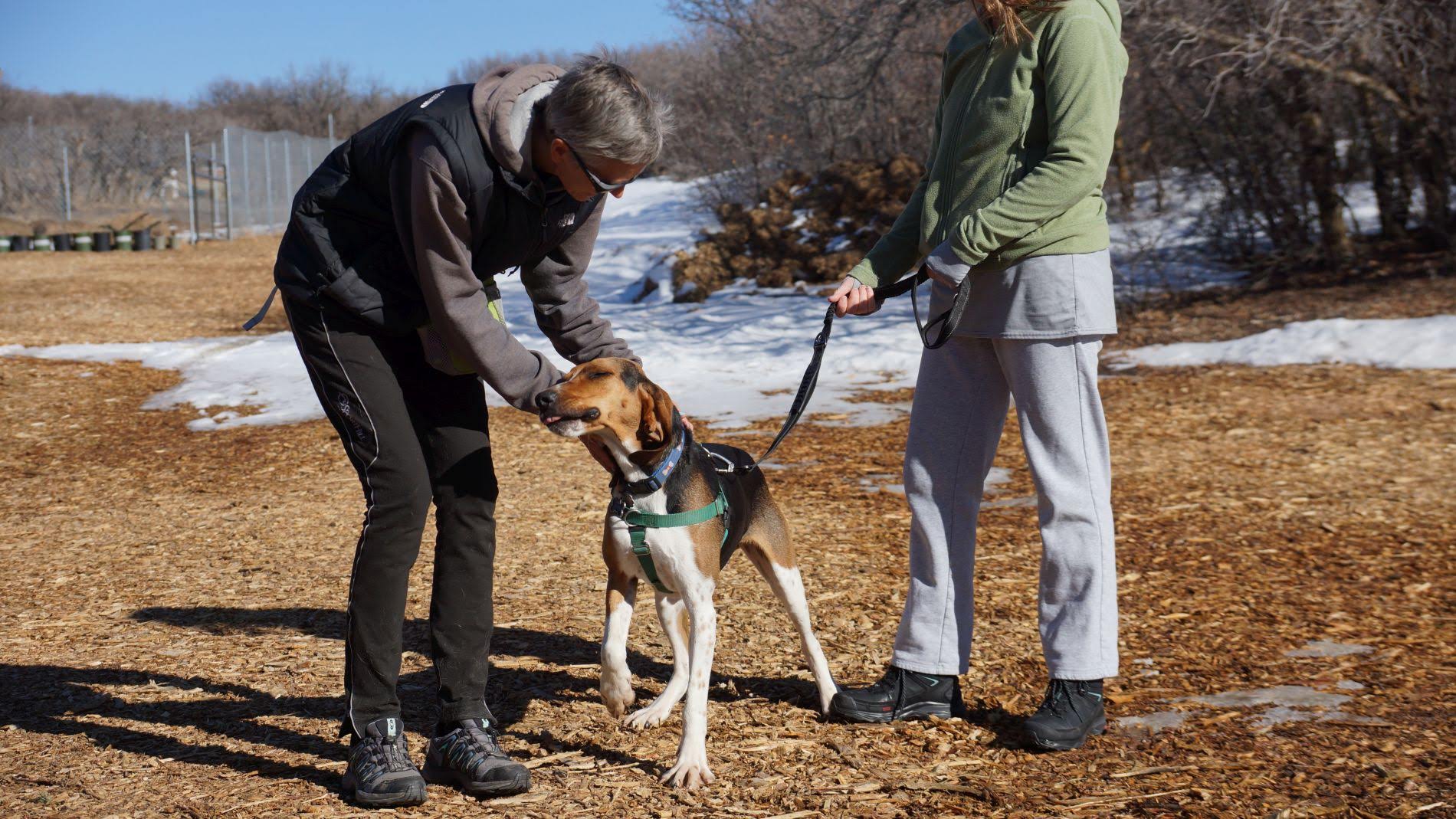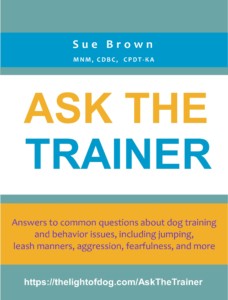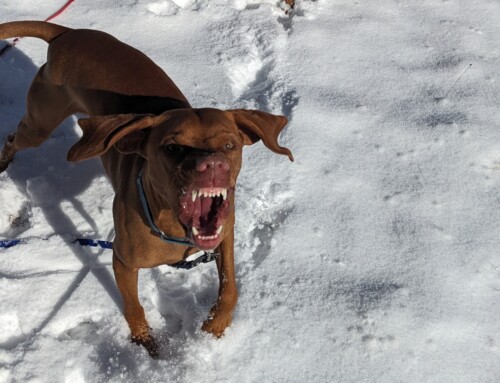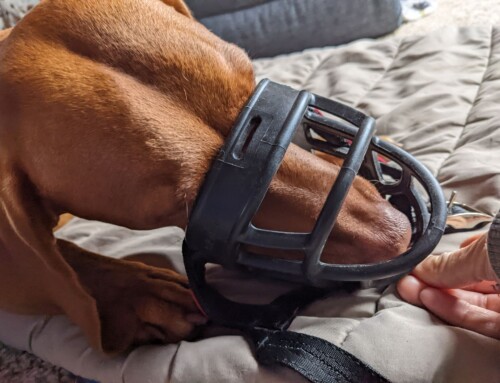DOG TRAINING OFFERED IN-PERSON AND ONLINEOur dog training services are delivered in almost any format that meets your needs. We have GROUP CLASSES at our indoor and outdoor facilities on our farm, ONLINE LIVE STREAMING classes, and SELF-PACED VIDEO-BASED training through our Online Dog Training Course. Our PRIVATE TRAININGS can be done in-home, outside, in public dog-friendly locations, at our facility on our farm, online via phone or video conferencing and through email. |
Question:
My dog is overly friendly with everyone who visits so it’s difficult for them to get in the door. It’s hard for me to hold him back and open the door. What can I do?
The Trainer Answers:
It can be a challenge for our dogs to be polite when visitors arrive! Though I would much rather have the problem of an overenthusiastic greeter than one who is afraid of strangers, it is still a problem none-the-less.
I suggest starting with teaching your dog some polite behavior at the front door BEFORE visitors arrive. Many dogs get highly aroused at the doorway because it either means they are going for a walk or visitors are coming to see them. (We know the visitors aren’t always there to see our dogs, but try telling that to your over-the-top-happy-greeter!) Before the guests arrive, we want to help calm things down at the doorway.
If this is the door you use for dog walks, work on calm behavior getting leashed up and out the door. If this door is primarily used for visitors, focus on teaching your dog to wait behind a predetermined line several feet away from the doorway. You want to give your visitors enough room to get in and close the door without physical contact with your dog until you give your dog permission.
Practice having your dog wait behind that line (or on a rug, or where the carpet meets the tile, etc.) while you go to the door. If you can make it to the door, try opening it. If he leaps forward when the door opens, back up a step and practice some more. When he’s calm when you open the door, see if you can step out and right back in. Or pretend you are talking to someone at the door. Once he’s good with these steps, have a family member or close friend who visits regularly stop by and help you practice. At first, have them stand outside but do not ring the doorbell. Once your dog is handling that well, then add in ringing the doorbell or knocking on the door.
It will take a lot of practice, but if you have frequent visitors, it will be worth the effort to hear your visitors say, “My, what a well-behaved dog you have!”
Our goal is to positively impact the lives of as many dogs and their families as we can, in part through our extensive library of video, infographics and text articles. |











Leave A Comment